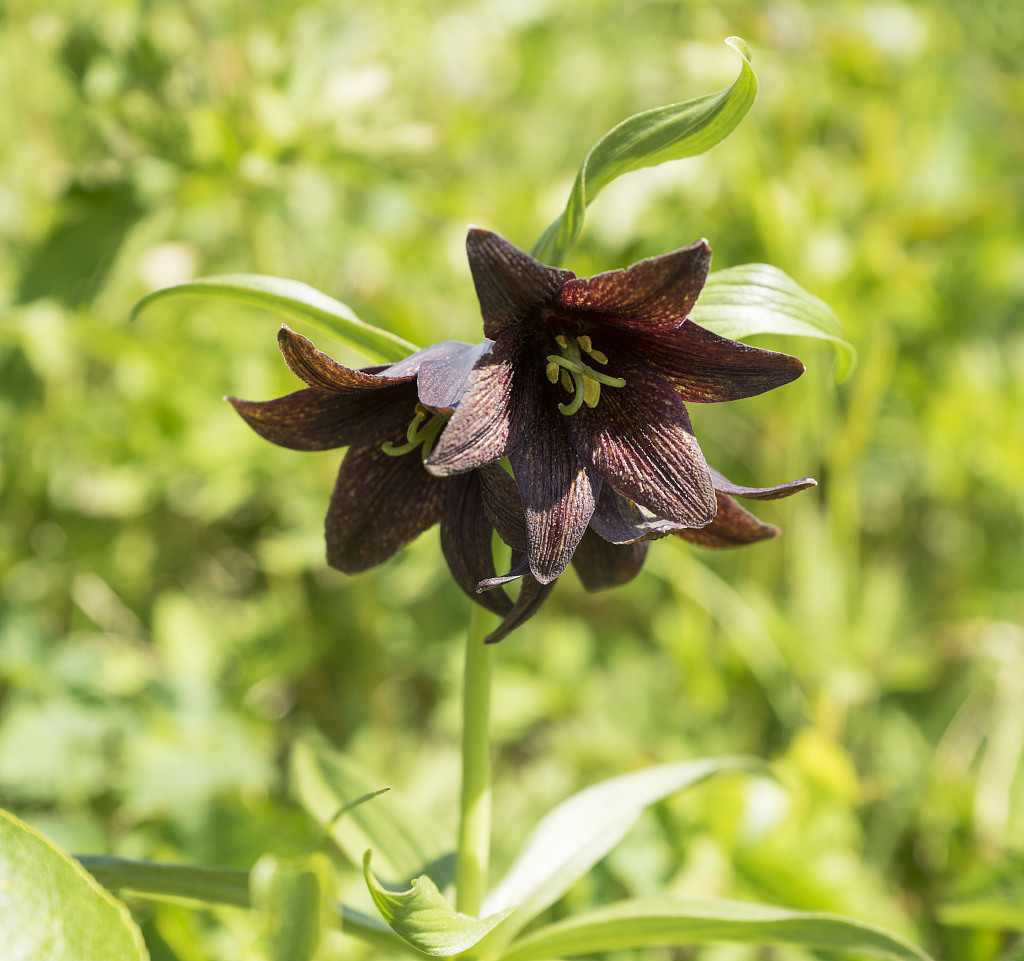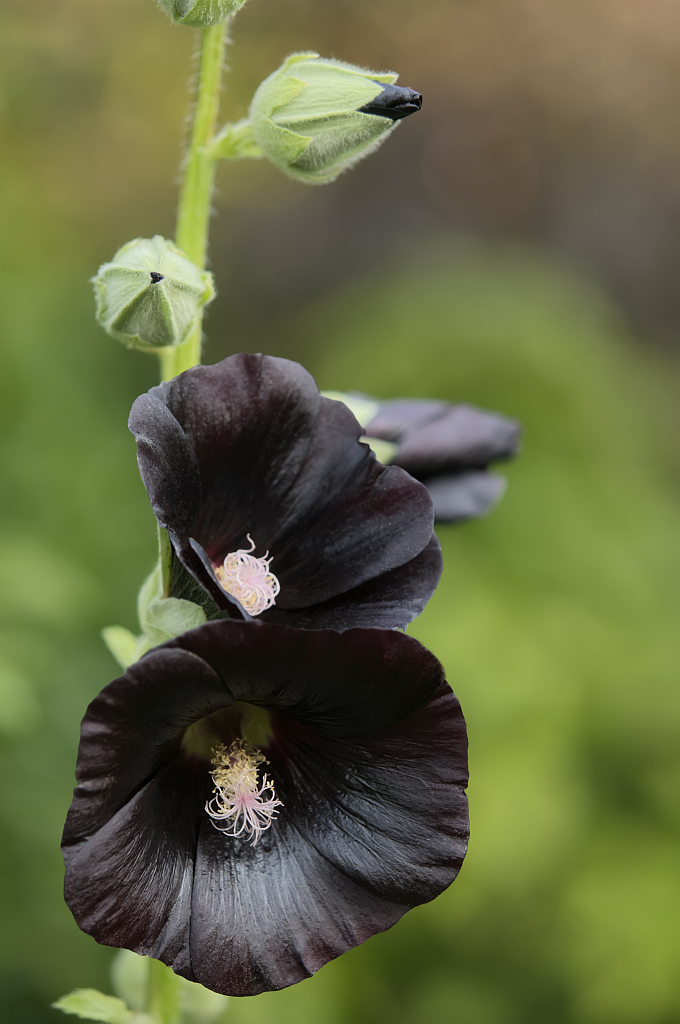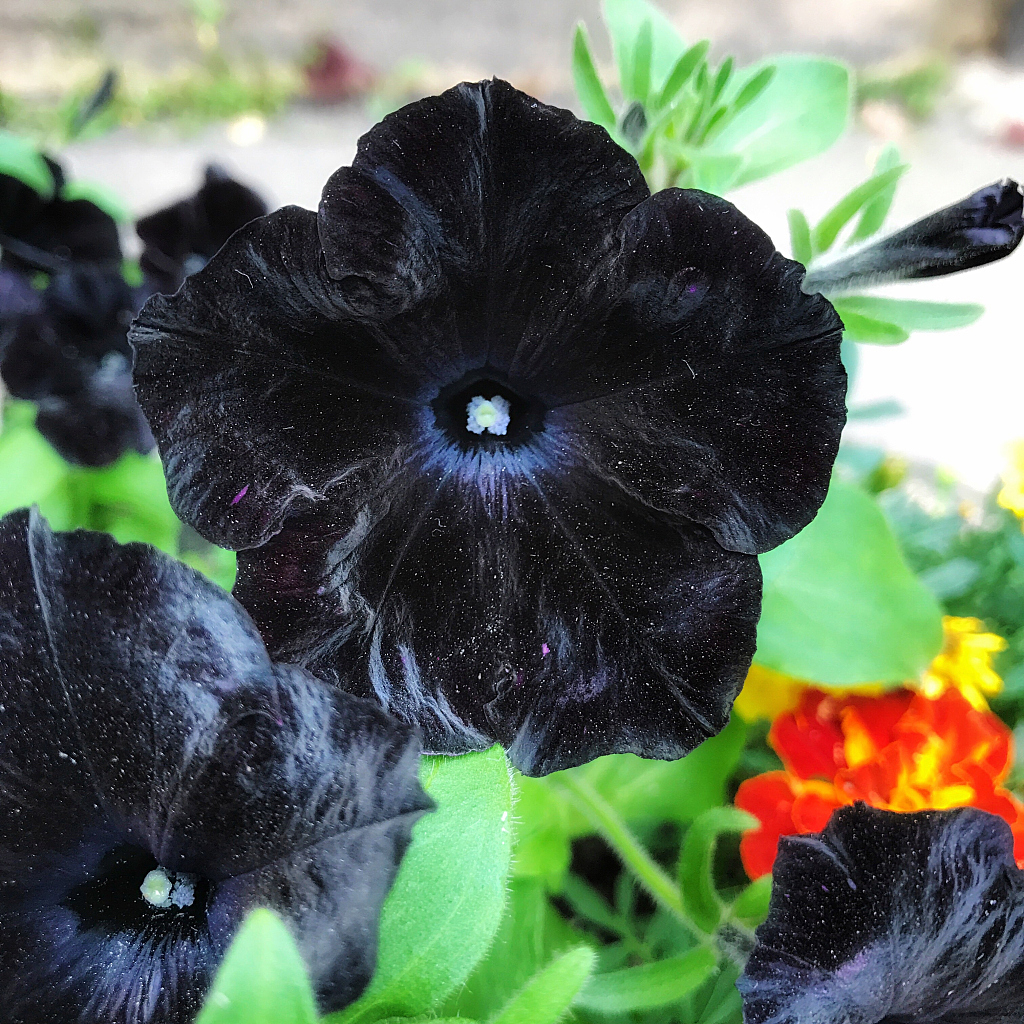
Plant
15:37, 10-Jun-2019
The mysterious black flowers
By Ding Qian

Black flowers are unique and mysterious. Even though it's impossible for a flower to be entirely black – in fact, the bloom is usually dark purple or dark chocolate – but it's still so rare and beautiful that it would captivate your attention and heart.
Here are some black flowers that shine with the light of mystery and strength.
Chocolate Lily

A chocolate lily. /VCG Photo
A chocolate lily. /VCG Photo
The plant, which is native to the coastal ranges of California, is a perennial herb with lance-shaped leaves. The flower, which blooms in March and April, is bell-shaped and has six purplish-black petals. Although they don't have a sweet scent, the plant is crucial for fixing nitrogen in the soil.
Black Hollyhock

Black hollyhock. /VCG Photo
Black hollyhock. /VCG Photo
Hollyhocks have been cultivated for centuries. The black hollyhock, with its mystical display in midsummer, is a favorite of gardeners who are looking for something different and stunning. It's also attractive to hummingbirds, honeybees, and butterflies. Although a short-lived perennial, it reseeds automatically for many years.
You can plant the flower in front of a white fence or wall for a sharp contrast. Black and white; how classic!
Black Petunia

Black petunia /VCG Photo
Black petunia /VCG Photo
This gorgeous black petunia was developed using natural breeding techniques. Petunias are common bedding plants and you can find them widely grown in gardens and containers. But the one with black color wasn't created until 2010. Experts mixed existing colors and bred the flower by pollen. Now we have this amazing looking plant that goes beautifully with white or pink flowers.
Hellebore

Hellebore /VCG Photo
Hellebore /VCG Photo
The plant is also called "winter rose" or "Christmas rose." However, it's not actually a rose, it's a perennial flowering plant in the family Ranunculaceae. The plant, which blooms in spring, is particularly valued by gardeners for its beauty and shade tolerance. They are usually pink or white but sometimes are a purple-black color. But don't be fooled by the charming appearance; the flower is actually quite poisonous.
(Cover image via VCG)
(If you want to contribute and have specific expertise, please contact us at nature@cgtn.com.)

SITEMAP
Copyright © 2018 CGTN. Beijing ICP prepared NO.16065310-3
Copyright © 2018 CGTN. Beijing ICP prepared NO.16065310-3